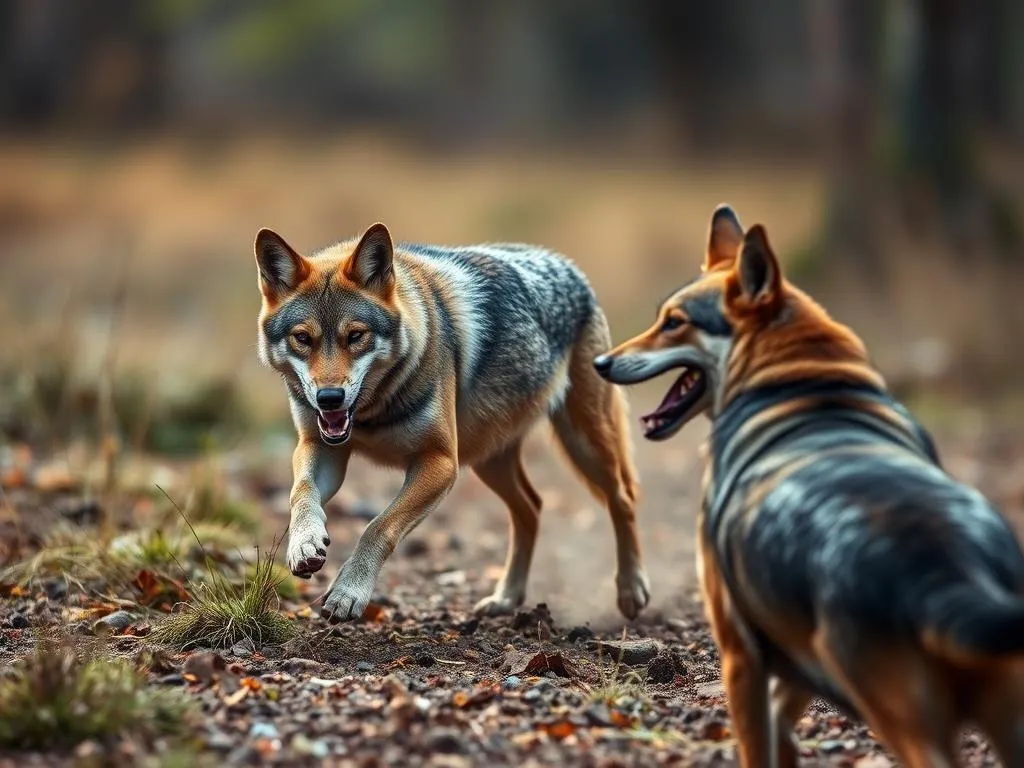
Introduction
As dog owners, ensuring the health and safety of our beloved pets is a top priority. One emerging concern that many pet owners may not fully understand is the potential threat posed by coyotes. This article aims to educate dog owners about the risks of coyote attacks on dogs and highlight the importance of comprehensive dog health care. Understanding the connection between coyotes and domestic dogs is crucial in safeguarding our furry companions from harm.
Understanding Coyotes
Coyote Behavior and Habitat
Coyotes are highly adaptable creatures that thrive in a variety of environments. They are found in urban, suburban, and rural areas, often living in close proximity to humans. Their natural behavior includes being primarily nocturnal, meaning they are most active during dawn and dusk. Coyotes are opportunistic feeders, meaning they will scavenge for food and may hunt small animals, including pets.
During different seasons, coyote behavior can change. In spring, they may be more territorial as they establish dens for their young, while in fall, they may become more social as they form packs. Understanding these behavior patterns can help dog owners anticipate potential risks.
Coyote Population Growth
In recent years, coyote populations have surged in many areas. Several factors contribute to this increase, including urbanization, availability of food sources, and a lack of natural predators. Areas with high coyote populations are often those where human development encroaches on natural habitats. Regions such as the Midwest and Southwest have seen significant growth in coyote numbers, making it crucial for dog owners in these areas to be aware of the risks.
Coyotes and Dogs: The Risks
Why Coyotes Target Dogs
Understanding why coyotes may target dogs is essential for pet owners. Coyotes may view small dogs as potential prey, while larger dogs can be seen as threats to their territory. Breeds that are smaller and more vulnerable, such as Chihuahuas and Dachshunds, are often at a higher risk of attacks. Conversely, larger breeds like German Shepherds may provoke a defensive response from coyotes, leading to aggression.
Signs of Coyote Presence
Being able to identify signs of coyote activity is key to keeping your dog safe. Look for:
- Tracks: Coyote tracks are typically elongated and narrow, often resembling those of a domestic dog but with more pointed toes.
- Scat: Coyote droppings may contain fur, bones, or seeds, indicating their recent activity in the area.
- Vocalizations: Coyotes communicate through howls, yips, and barks. Hearing these sounds, especially at night, can indicate their presence nearby.
Statistics on Coyote Attacks on Dogs
Recent data shows that coyote attacks on dogs are becoming more common, particularly in regions where their populations are on the rise. According to various wildlife studies, small breeds are more frequently targeted, with reports indicating that Chihuahuas, Yorkshire Terriers, and other small dogs are at a higher risk during coyote mating season. Understanding these statistics can help dog owners take preventive measures.
Preventive Measures for Dog Owners
Keeping Dogs Safe in Coyote Territory
There are several effective strategies for protecting your dog in areas known for coyote activity:
- Secure Your Yard: Installing a tall fence (at least 6 feet high) can deter coyotes from entering your property. Consider adding an overhang or digging the base of the fence underground to prevent them from digging underneath.
- Use Motion-Activated Lights: Bright lights can discourage coyotes from approaching your yard at night.
- Avoid Leaving Food Outdoors: Keep pet food, bird feeders, and compost bins secured to avoid attracting coyotes.
Training and Socialization
Training your dog to respond to potential threats is vital. Commands like “come” and “leave it” can be crucial in keeping your dog safe during an encounter. Additionally, proper socialization helps your dog remain calm and better respond to strange animals, including coyotes.
Emergency Preparedness
Being prepared for a coyote encounter can make a significant difference. Here are some essential items to carry during walks:
- Pepper Spray: A deterrent that can be effective if a coyote approaches too closely.
- Sound Deterrents: Carry a whistle or a loud noise-making device to scare off coyotes.
- Flashlight: A strong flashlight can help you see and deter coyotes in low-light conditions.
Health Care Considerations Following an Encounter
Immediate Health Concerns
If your dog has an encounter with a coyote, it’s essential to monitor them closely for signs of distress or injury. Common issues include:
- Bites or Scratches: Look for wounds that may require immediate veterinary attention.
- Signs of Stress: Excessive panting, shivering, or hiding may indicate your dog is traumatized.
Veterinary Care and Follow-Up
It’s crucial to take your dog to the veterinarian after any encounter with a coyote, especially if there were signs of aggression. The vet may recommend vaccinations, particularly for rabies, and assess any injuries. Regular check-ups can help prevent potential health issues that could arise from such encounters.
Behavioral Changes and Mental Health
Dogs can experience behavioral changes following a stressful encounter with a coyote. Signs may include increased anxiety, aggression, or fearfulness. Strategies to help dogs recover include:
- Positive Reinforcement: Reward calm behavior with treats and praise to create positive associations.
- Gradual Exposure: Slowly reintroduce your dog to outdoor environments, starting in familiar areas before venturing into coyote-prone territories.
Community Awareness and Responsibility
Reporting Coyote Sightings
As a community, it’s essential to report coyote sightings to local wildlife authorities. Understanding where coyotes are frequenting can help inform residents and promote safety measures. Many communities have wildlife management programs that focus on coexistence strategies.
Educating Others
Dog owners can play a vital role in educating their communities about the risks coyotes pose to pets. Hosting workshops or informational sessions can spread awareness and equip fellow pet owners with the knowledge they need to protect their dogs. Sharing personal experiences and preventive measures can empower others to take action.
Conclusion
In summary, understanding the potential risks of coyote attacks on dogs is crucial for every dog owner. By implementing preventive measures, staying informed about coyote behavior, and preparing for emergencies, pet owners can significantly reduce the chances of an encounter. Remember, the wellbeing of our dogs is a shared responsibility, and proactive steps can make all the difference in keeping them safe from these wild canines.
As a final note, remain vigilant and proactive in your approach to dog health care and safety. The more informed we are, the better equipped we will be to protect our furry friends from the dangers of the wild.









